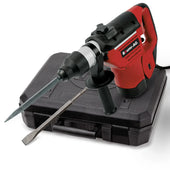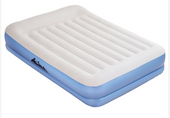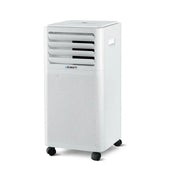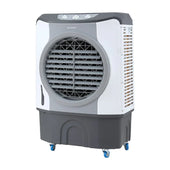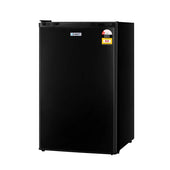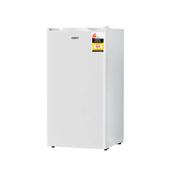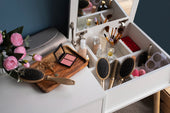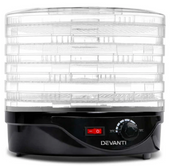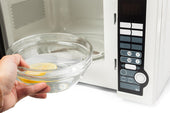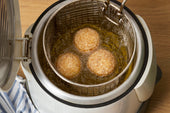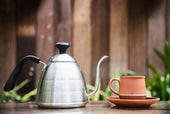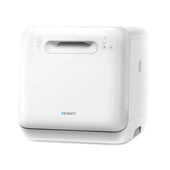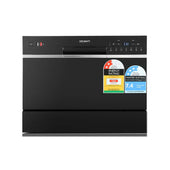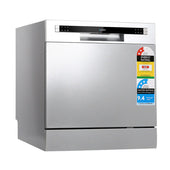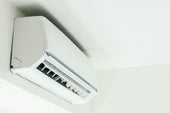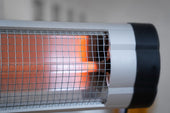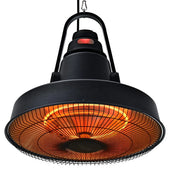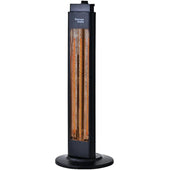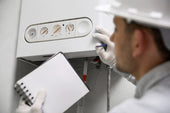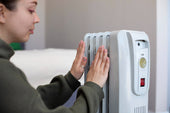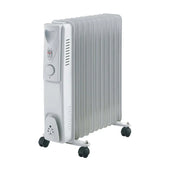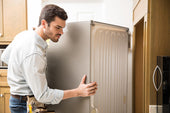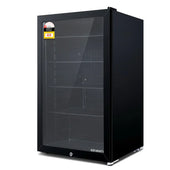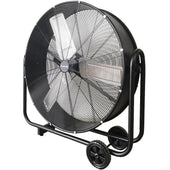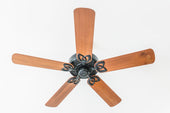Understanding Your Bathroom Cabinet Materials
Bathroom cabinets are crafted from a range of materials, each requiring tailored care techniques. Common materials include wood, laminate, MDF (medium-density fibreboard), and metal. Wood cabinets are often sealed or painted, requiring gentle cleaning to preserve finishes. Laminate, a more moisture-resistant option, benefits from cleaning with non-abrasive solutions to avoid scratches. MDF, sensitive to water damage, demands immediate drying after cleaning and the use of non-saturating sprays. Metal cabinets, often coated to prevent rust, should be wiped with a soft cloth using mild cleansers. Recognising the material ensures cleaning methods that sustain both longevity and appearance.
Essential Cleaning Supplies You’ll Need
To maintain pristine bathroom cabinets, it is crucial to have the right cleaning supplies on hand. A soft microfibre cloth is essential for wiping down surfaces without causing scratches. Gentle, non-abrasive cleaners are preferable to protect finishes, particularly on wood or laminate cabinets. White vinegar can serve as a natural alternative for tackling grime. During days of deep cleaning, for tougher spots, mild dish soap diluted in warm water works effectively. Keep a small brush or an old toothbrush for detailed cleaning around corners and hardware. Avoid harsh chemicals like bleach. Rubber gloves are useful for protecting the skin during cleaning.
Daily Maintenance Practices to Prevent Wear and Tear
- Wipe Spills Immediately: Spills, especially from makeup, toothpaste, or water, can cause stains or warp the wood. Use a damp cloth to clean spills right away. Avoid leaving excess moisture behind.
- Dust Regularly: Dust particles can scratch the cabinet surface over time. Use a soft microfibre cloth to gently remove dust every day.
- Ventilate the Bathroom: High humidity damages materials and encourages mould growth. Ensure proper ventilation by using an exhaust fan or opening windows after a shower.
- Avoid Abrasive Cleaners: Products with harsh chemicals or rough textures can strip finishes. Opt for gentle, cabinet-safe cleaning solutions.
- Inspect Hardware: Check hinges and handles daily for looseness. Tighten screws or bolts promptly to prevent further strain.
- Always Dry Wet Areas: Use a dry cloth to remove any lingering moisture near sink areas or around panels to avoid water damage.
The Importance of Decluttering Before Cleaning
Decluttering is an essential first step before cleaning bathroom cabinets, ensuring the process is efficient and thorough. Removing unused or expired items prevents germs and bacteria from spreading and creates more space for necessary items. Overcrowded cabinets hinder cleaning as clutter obstructs surfaces and corners.
To declutter effectively:
- Empty the cabinet: Take everything out to observe the available space.
- Sort items: Separate essentials from expired or unused products.
- Dispose responsibly: Recycle or discard items such as empty containers or expired products.
- Organise: Categorise remaining items for easier access and tidy storage.
Decluttering simplifies cleaning, enhances hygiene, and prolongs the cabinet’s appearance and functionality.
How to Deep Clean Different Types of Cabinet Finishes
Proper care begins with understanding the finish of bathroom cabinets, ensuring cleaning techniques are tailored. Here is a breakdown based on popular cabinet finishes:
1. Wood Cabinets
- Use a mild dish soap mixed with warm water for cleaning.
- Wipe with a damp, soft microfiber cloth to avoid scratches.
- Dry thoroughly with a clean cloth to prevent water spots or damage.
2. Laminate Cabinets
- Spray a non-abrasive cleaner onto a cloth rather than directly on the surface.
- Remove stains using a blend of baking soda and water.
- Avoid harsh scrubbing to maintain the glossy finish.
3. Painted Cabinets
- Opt for mild soaps or specialised paint-safe cleaners.
- Rinse all residue delicately with clean water.
- Address chipped areas with a paint touch-up to restore appearance.
4. Metal Cabinets
- Clean with vinegar and water to remove grime efficiently.
- Polish using a dry cloth to enhance the metallic sheen.
- Refrain from using steel wool or abrasive pads to prevent surface damage.
Tackling Stubborn Stains and Buildup
Removing stubborn stains and grime from bathroom cabinets requires a targeted approach. For tough spots, create a paste using bicarbonate of soda and a small amount of water. Gently apply the paste with a soft cloth or sponge, focusing on the problem areas. Avoid harsh scrubbing, as it could damage the cabinet’s finish. Soap scum or mineral buildup can be addressed with a mixture of white vinegar and warm water. Spray the solution onto the affected areas and allow it to sit for 5–10 minutes before wiping off with a microfibre cloth. Always rinse and dry thoroughly to prevent residue.
Preventing Water Damage in Bathroom Cabinets
To protect bathroom cabinets from water damage, it is crucial to address spills and leaks promptly. Water-resistant materials or sealants should be applied to cabinet surfaces, particularly around sink areas. Installing splash guards or waterproof liners can further shield cabinets from moisture. Ensuring proper ventilation in the bathroom helps reduce humidity, which can prevent warping or mould growth.
- Wipe any spills immediately to avoid seepage into wood or laminate surfaces.
- Inspect periodically for leaks under sinks or around plumbing.
- Use cabinet liners to create a protective barrier against accidental water exposure.
- Reapply sealants annually to reinforce cabinets against water intrusion.
Maintaining dry countertops and encouraging airflow are effective preventative measures homeowners should implement.
Best Practices for Polishing and Protecting Cabinet Surfaces
To maintain the lustre of bathroom cabinets, use a non-abrasive cleaner specifically designed for the cabinet’s material. Avoid harsh chemical detergents as they may damage finishes. After cleaning, ensure surfaces are completely dry to prevent moisture build-up, which can lead to warping or discolouration over time.
Regular polishing protects and enhances the cabinet’s appearance. Use a soft microfibre cloth and an appropriate polish—wood cabinets benefit from furniture wax, while laminate cabinets may require a silicone-free product. Apply polish sparingly in a circular motion to prevent excess residue.
To protect surfaces further:
- Avoid exposing cabinets to direct sunlight, which can cause fading.
- Use mats or coasters under toiletries to catch spills.
- Tighten any loose hardware periodically to avoid surface damage through instability.
Using Homemade Cleaning Solutions for Eco-Friendly Care
Creating homemade cleaning solutions can be an effective and eco-friendly approach to maintaining bathroom cabinets. Natural ingredients like white vinegar, baking soda, and lemon juice are safe for most cabinet surfaces, reducing the risk of damage caused by harsh chemicals.
- For greasy spots: Mix equal parts white vinegar and warm water. Dampen a microfibre cloth with the solution and gently wipe the surface.
- For odours: Sprinkle baking soda inside cabinets, letting it sit for several hours before wiping clean.
- For stains: Combine lemon juice with a small amount of baking soda for a gentle scrub.
Regular use prevents grime build-up, ensuring cabinets retain their original lustre.
When and How to Refinish or Repair Damaged Cabinets
Damaged bathroom cabinets can compromise both functionality and aesthetic appeal. It's essential to refinish or repair them if issues such as chipped paint, water stains, or peeling laminate occur. First, inspect the cabinets to determine the extent of damage. Superficial issues like scratches or loose hardware can be fixed easily by sanding, repainting, or tightening screws.
For significant damage, such as warped wood or persistent water damage, consider refinishing the cabinets. Remove all doors and hardware, clean surfaces thoroughly, sand away imperfections, and apply a primer. Follow this with fresh paint or stain. Reattach everything once dried. Always use water-resistant finishes to prevent future damage.
Tips to Minimise Humidity and Protect Cabinets in the Long Run
- Increase Ventilation Install an exhaust fan or keep a window slightly open during and after showering to reduce humidity levels effectively.
- Use Dehumidifiers Place a portable dehumidifier in the bathroom to keep excess moisture in check, especially in poorly ventilated spaces.
- Wipe Down Surfaces Regularly dry cabinet exteriors and nearby wet areas with a soft cloth to prevent moisture accumulation.
- Seal Cabinet Edges Apply waterproof sealants to exposed cabinet edges to safeguard them from water damage over time.
- Avoid Overloading Cabinets Leave enough airflow space within cabinets and avoid overstuffing them with items to prevent trapped humidity.
Seasonal Care: Adapting Your Cleaning Routine Throughout the Year
Proper care for bathroom cabinets involves adjusting cleaning routines to match seasonal conditions. Winter’s low humidity can lead to dryness in wood cabinets; applying a wood conditioner helps prevent cracking. During spring, focus on dusting and removing accumulated allergens. Summer’s heat may cause warping, so ensure cabinets stay cool and dry by controlling room ventilation. Autumn’s dampness can result in mould; using an anti-mould spray and thorough cleaning safeguards the cabinetry.
Tips for Seasonal Adjustments:
- Winter: Apply wood conditioner and clean surfaces regularly.
- Spring: Increase dusting frequency and use gentle cleaners.
- Summer: Ventilate effectively to avoid warping.
- Autumn: Monitor for mould and use anti-fungal sprays.
Applying these measures keeps bathroom cabinets functional and visually appealing year-round.
Common Mistakes to Avoid When Cleaning Bathroom Cabinets
- Using Harsh Chemicals: Some cleaners can damage cabinet finishes over time. Avoid abrasive products or those with ammonia or bleach, as these can cause discolouration or warping.
- Excessive Water Use: Oversaturating cabinets with water may lead to swelling, especially for wood or particleboard materials. Always use a slightly damp cloth instead of soaking wet tools.
- Ignoring Hardware: Neglecting to clean handles, knobs, or hinges can lead to built-up grime and tarnish. Use a mild solution to maintain these fittings as well.
- Skipping Regular Maintenance: Dirt and moisture accumulate when cabinets are not cleaned routinely. Ignoring regular upkeep makes deep cleaning more challenging.
- Using Rough Tools: Abrasive pads or stiff brushes can scratch finishes. Opt for soft microfibre cloths or sponges for gentle cleaning.
Enhancing Longevity with Proper Organisation and Storage Solutions
Proper organisation and storage within bathroom cabinets play a vital role in preserving their condition. Using dividers or trays ensures items like toiletries or cleaning supplies are kept orderly, preventing spills or scratches. Opt for clear bins or labelled containers to reduce clutter and locate items easily without excessive handling.
Avoid overloading shelves, as this can strain hinges or damage internal surfaces over time. Heavy items should be positioned closer to the cabinet's base to maintain balance and structural integrity. Consider moisture-resistant organisers to combat humidity, which can warp materials. Regularly decluttering unnecessary items protects the cabinet from wear caused by overcrowding.






